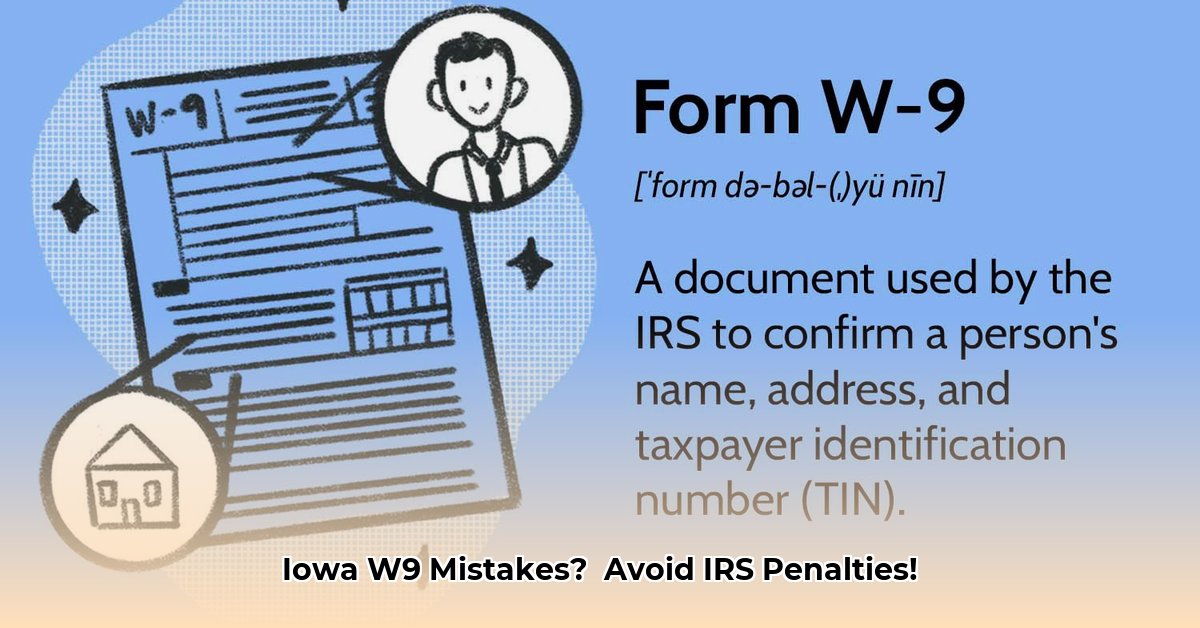
Understanding Form W-9: Your Tax ID for Independent Work
Navigating tax forms can be daunting, but completing Form W-9 doesn't have to be a headache. This guide provides a step-by-step approach to accurately filling out Form W-9, specifically focusing on Iowa requirements, ensuring you avoid penalties. This form acts as your official tax identification for business purposes. It's essential for anyone receiving payments for freelance, contract, or independent work. Businesses use this information to report payments made to you to the IRS. This simple act keeps things transparent and safeguards you against tax-related issues. For additional Iowa tax resources, check out this helpful site.
Did you know that a single incorrect entry on your W-9 can lead to delays and additional paperwork? Let's avoid that hassle!
What is Form W-9?
Form W-9 is a crucial IRS form used to collect taxpayer identification information from independent contractors, freelancers, and other non-employees. This information is vital for businesses to report payments made to you, ensuring compliance with IRS regulations. Accurate completion is paramount. The form requests your name, address, tax classification, and Taxpayer Identification Number (TIN).
Why is the W-9 so important? It ensures accurate reporting, allowing both you and the business paying you to fulfill your tax obligations correctly. This prevents confusion and potential audits later on.
Completing Your W-9: A Step-by-Step Guide
Let’s break down the process into manageable steps. Each step is critical to avoid penalties.
Step 1: Name (As It Appears on Your Tax Return) Use your legal name precisely as it appears on your tax return. Inaccuracies can lead to delays. (For example, use "John David Smith" not "John Smith" if that's how it appears on your tax document).
Step 2: Business Name (If Applicable) If you operate under a business name, enter it here. Otherwise, leave this section blank.
Step 3: Tax Classification Indicate your business structure (sole proprietorship, LLC, partnership, etc.). This is crucial for accurate reporting. Choose the option that precisely matches your business documentation. If unsure, consult a tax professional.
Step 4: Exemptions (If Any) This section applies if you qualify for an exemption. Provide supporting documentation if necessary.
Step 5: Taxpayer Identification Number (TIN) Enter your Social Security Number (SSN) or Employer Identification Number (EIN). Double-check accuracy. A single incorrect digit can create significant problems.
Step 6: Address Provide your current mailing address. A P.O. Box is generally acceptable.
Step 7: Signature and Date Sign and date the form, confirming the accuracy of the information provided. This step is crucial; an unsigned form is invalid.
Common Mistakes to Avoid
Avoiding common errors ensures quick and accurate processing of your form. Learn from others' mistakes and safeguard your financial well-being.
- TIN Errors: Recheck your TIN multiple times. A single incorrect number can cause significant delays and complications.
- Incorrect Classification: Verify your tax classification aligns perfectly with your business structure.
- Missing Signature: Always remember to sign and date the form. An unsigned W-9 is invalid.
Iowa-Specific Considerations
While Iowa largely follows federal guidelines for W-9 forms, it's wise to review any state-specific requirements. The Iowa Department of Revenue website is a valuable resource for this information. Consult a tax professional for complex transactions or situations.
Still Unsure? Seek Professional Guidance
Completing Form W-9 correctly is critical for avoiding tax penalties. If you encounter any difficulties or uncertainty, seeking professional guidance is invaluable. A tax advisor can provide personalized assistance, ensuring complete compliance with Iowa tax laws. Proactive compliance is always beneficial, saving you potential future headaches.
Remember, a few minutes spent ensuring accuracy now can save you significant time and potential financial penalties later on. Accuracy and attention to detail are crucial.
Key Takeaways:
- Accurate completion of Form W-9 is essential to avoid penalties.
- Verifying your business structure and tax classification is crucial.
- Double-checking your TIN prevents costly errors.
- Seeking professional help when unsure minimizes potential risks.